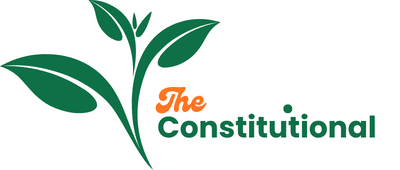How to Optimize Property Layouts for the Integration of Home Automation Systems?

As the world rides on the wave of technological advancement, the real estate sector is not left out. Today, the ability to automate homes and control them remotely is no longer the stuff of science fiction, but a reality lived daily. As a homeowner, it’s crucial to understand the possibilities and opportunities that home automation offers. How can you optimize your property layout to accommodate smart systems seamlessly? And why is this important? This article will provide you with valuable insights on these and more.
Understanding Home Automation Systems
Home automation refers to the use of various interconnected technologies, devices, and systems to automate activities and control various home functions. These may range from lighting to security, heating, and cooling systems, among others. With the rapid growth of the Internet of Things (IoT), home automation has moved beyond mere convenience to become a crucial aspect of energy efficiency, security, and even property valuation.
A découvrir également : How to Utilize Prefab Construction Methods for Quick Disaster Relief Housing?
Home automation systems can be as simple as programmable thermostats or as complex as a network of interconnected devices controlled via a central hub, often using a smartphone or tablet. These systems can use sensors, voice commands, or automate tasks based on preset rules. For example, your home could automatically lower the blinds when it detects the sun is too bright or turn off lights when no one is in a room to save energy.
Importance of Optimizing Property Layouts for Home Automation
The integration of home automation is not just about the devices and systems you install; it is also about how well they fit into your home layout. An optimized property layout allows for seamless integration of smart systems, enhancing their performance and ensuring they serve your needs effectively.
A lire aussi : What Are the Key Factors for Success in Build-to-Rent Real Estate Ventures?
Without proper planning, you may run into various challenges such as wireless signal disruptions, energy inefficiency, or a disjointed smart home experience. On the other hand, a well-planned layout can enhance your home’s security, maximize energy efficiency, and increase the property’s value.
Incorporating Home Automation in Your Property Design
When it comes to integrating smart systems into your home, an early start is key. If you’re building or remodeling your home, it’s best to incorporate home automation into your plans from the start. This doesn’t just apply to the systems themselves but also the wiring, placement of devices, and even furniture layout.
One important consideration is the placement of wireless routers and other devices that broadcast signals. These should be positioned to provide maximum coverage and avoid signal disruptions. For wired devices, plan your wiring routes in advance to ensure they are convenient and unobtrusive.
Another crucial aspect is energy management, especially for energy-intensive devices like smart thermostats or lighting systems. Careful placement and programming can help optimize energy use, reducing your energy bills and environmental impact.
When planning for smart security systems, consider your property’s unique vulnerabilities. Place cameras and sensors in strategic locations to cover all potential entry points. Also, consider integrating smart locks and access control systems for added security.
Keeping Up with Technological Trends
The world of home automation is constantly evolving with new technologies and devices hitting the market regularly. As a homeowner, keeping up with these trends can help you make the most of your smart home system. Emerging trends such as voice control, machine learning, and augmented reality are set to revolutionise how we interact with our homes.
Voice control, for example, is becoming increasingly popular, with devices such as Amazon’s Alexa and Google Home leading the way. With these, you can control various aspects of your home using just your voice, making it more convenient than ever.
Machine learning, on the other hand, allows your smart system to learn from your habits and preferences, automatically adjusting settings to suit your needs. For example, your smart thermostat could learn your preferred temperature settings at different times of the day and adjust accordingly.
In conclusion, when it comes to integrating home automation systems, careful planning is essential. By understanding your needs and the capabilities of various smart systems, you can optimize your property layout to accommodate these systems seamlessly, enhancing their performance and adding value to your property.
The Future of Real Estate: Smart Homes
The future of real estate is undeniably linked with the integration of smart home technology. As smart devices become more affordable and accessible, homeowners are increasingly embracing the convenience and efficiency that come with home automation systems. From smart thermostats that adjust temperatures based on usage patterns to security cameras that can be remotely monitored, home automation is transforming the way we live.
Smart homes are not just about convenience or luxury but are becoming an expectation in modern real estate. According to a study by Coldwell Banker, more than half of homeowners would consider or find it important to have smart home technology in their next home purchase.
As such, real estate developers and homeowners looking to renovate or sell their properties should consider integrating smart systems. This not only enhances the property’s appeal but can also significantly increase its value. It has been observed that smart homes sell at a premium compared to traditional homes due to their advanced functionalities and energy-saving capabilities.
Furthermore, home automation systems can also make homes more attractive to renters. A survey conducted by Wakefield Research revealed that 86% of millennials are willing to pay more for a rental property with smart home features. This makes smart home integration a worthwhile investment for property owners looking to increase their rental income.
It’s also worth noting that the growth of the smart home industry is driving innovation in the real estate sector. New construction methods and materials are being developed to better accommodate smart systems. For example, homes are now being built with conduits and spaces specifically designed for smart device wiring and installation.
Conclusion
As depicted in this article, optimizing property layouts for the integration of home automation systems is not just a trend but a necessity in today’s real estate market. From enhancing the functionality and comfort of homes to increasing their market value and appeal to potential buyers, the benefits of integrating smart systems are manifold.
The process of integrating home automation begins with understanding the capabilities of different smart devices and systems. From there, homeowners can plan their property layout to accommodate these systems, taking into consideration factors such as device placement, wiring routes, and energy management.
With the rapid advancement of home technology, it’s crucial for homeowners to keep up with the latest trends and developments. From voice-controlled devices to machine learning and augmented reality, the possibilities for home automation are constantly expanding, providing homeowners with numerous options to enhance their homes and lifestyles.
In conclusion, the integration of home automation systems requires careful planning and thoughtful design. However, with the right approach and understanding, homeowners can effectively transform their properties into convenient, efficient, and highly attractive smart homes. Stay ahead of the trend and begin your journey towards creating a smart home today.
